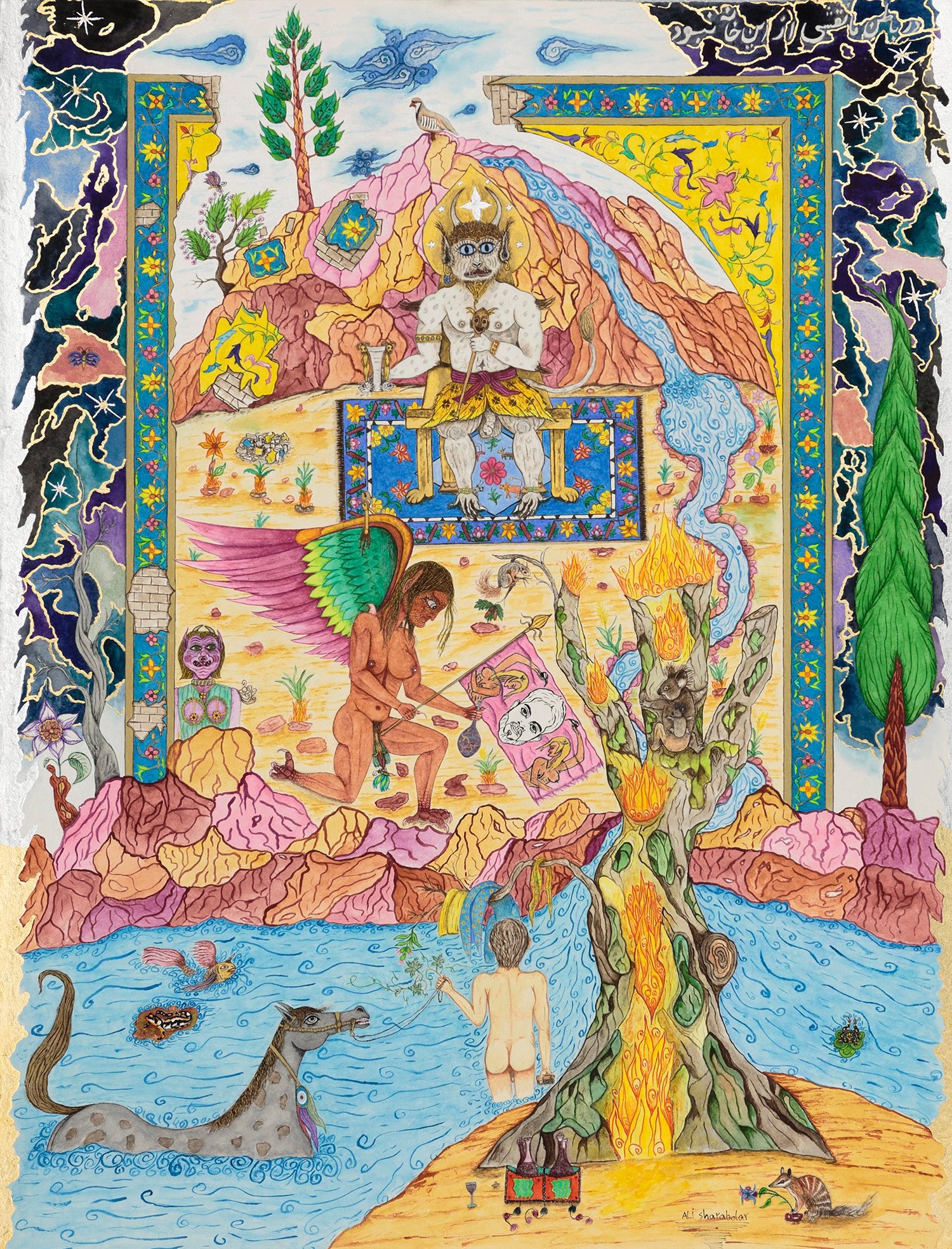Ali Sharabdar
Shiraz Wine
25 March - 23 April 2022
Ali Sharabdar’s watercolours tell the tale of James Busby (1802-1871), through a blend of Persian and Australian artistic and cultural influences. James Busby is best known for his role in drafting New Zealand’s 1835 Declaration of Independence and the 1840 Treaty of Waitangi, but he is also famed for introducing wine to Australia, by bringing vine stock from France to Australia in 1832. It is the history of Busby’s pioneering viticulture and the introduction of shiraz to Australia that has piqued Sharabdar’s interest. The grape that we in Australia call shiraz is known elsewhere as syrah, and Sharabdar’s speculation as to why the grape is called shiraz forms the basis for him to imagine an alternative history related to his own birthplace, the city of Shiraz in Iran (Persia).
The Iranian city of Shiraz has a rich history of wine culture stretching back thousands of years, with wine being an integral part of the local culture, industry and ceremony, up until the 1979 Islamic Revolution and the banning of alcohol for Islamic Iranians. Wine features prominently throughout classical Persian poetry and in the Zoroastrian religion, both of which influence Sharabdar’s work.
“Now in my imagination, James Busby went to Shiraz in Persia to get original Shiraz wine and in his travels he met the Queen of Persia. She gave him a bunch of original Shiraz grapes and a horse, and James Busby gave her a spoon of love, that is a famous traditional gift from the British.
But the Queen told him that he must pass seven challenges. These seven steps are inspired by Ferdowsi who was a Persian poet and author of Shahnameh (‘Book of Kings’, c. 1000 CE), which is one of the world’s longest epic poems created by a single poet.
In Ferdowsi’s book, Rostam is a legendary hero of Persian mythology who must overcome Seven Labours, or challenges. Seven is a holy number in Iranian culture, and in my artworks James Busby must pass his own seven steps in order to take Shiraz grapes to Australia. In his challenges Busby receives help from the transcendental forces of the Wine Goddess and Flower God. But in my version of the seven steps I want to show more about climate change and the animals that are endangered in both Iran and Australia, and everywhere in the world, because we have the same pain in common as the result of humans causing forest fires, mining, emissions.In the first step of Ferdowsi’s book, Rostam kills Div-e Sepid (chief of the divs/demons), who was very powerful and dangerous. But in James Busby’s steps the demon got the kingdom and things are going to be destroyed. In Iranian mythology a demon always works the other way around, for example if they say everything is good and normal it means it is a disaster. In my work the demon is a symbol of dictatorship and politics, because they always work the other way around and lie to everyone about the environment, which is the most important human concern. You can see what is happening now to the soil, air, sea, forest, animals… all are in danger.”
Ali Sharabdar (Ali Farahi Ghasrabunasr) was born in Shiraz, Iran, in 1986, and came to Australia in 2013 as a refugee, he has lived in Melbourne since 2013 on a bridging visa. Sharabdar has exhibited in Friends and Family at Daine Singer in 2019 and at The Art Room in 2019. Shiraz Wine at Daine Singer is his first solo exhibition. Sharabdar is a nom de plume, a Persian word meaning the person that provides and relishes wine.
INSTALLATION VIEWS
Installation photography: Tim Gresham












